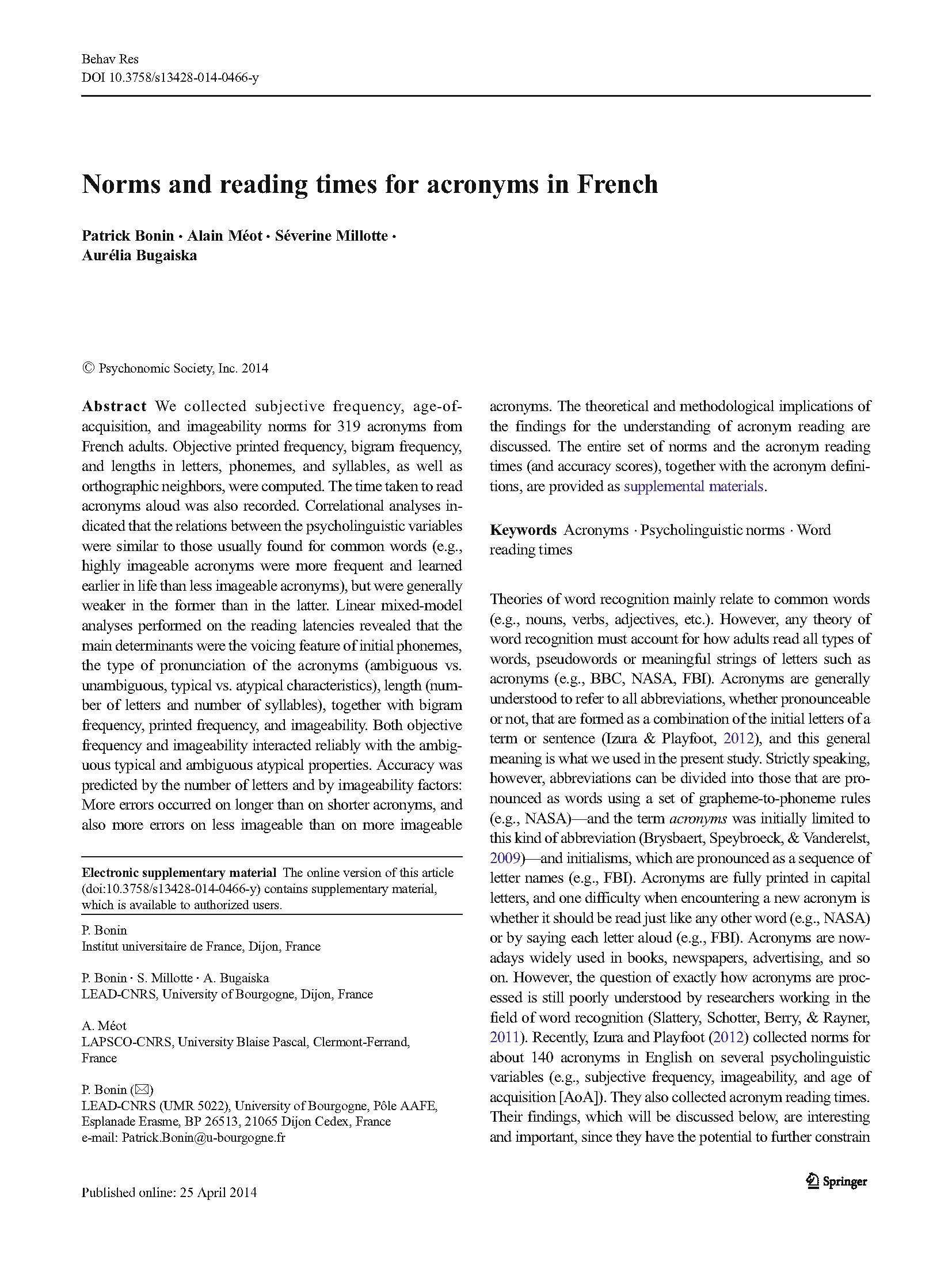We collected subjective frequency, age-ofacquisition, and imageability norms for 319 acronyms from French adults. Objective printed frequency, bigram frequency, and lengths in letters, phonemes, and syllables, as well as orthographic neighbors, were computed. The time taken to read acronyms aloud was also recorded. Correlational analyses indicated that the relations between the psycholinguistic variables were similar to those usually found for common words (e.g., highly imageable acronyms were more frequent and learned earlier in life than less imageable acronyms), but were generally weaker in the former than in the latter. Linear mixed-model analyses performed on the reading latencies revealed that the main determinants were the voicing feature of initial phonemes, the type of pronunciation of the acronyms (ambiguous vs. unambiguous, typical vs. atypical characteristics), length (number of letters and number of syllables), together with bigram frequency, printed frequency, and imageability. Both objective frequency and imageability interacted reliably with the ambiguous typical and ambiguous atypical properties. Accuracy was predicted by the number of letters and by imageability factors: More errors occurred on longer than on shorter acronyms, and also more errors on less imageable than on more imageable acronyms. The theoretical and methodological implications of the findings for the understanding of acronym reading are discussed. The entire set of norms and the acronym reading times (and accuracy scores), together with the acronym definitions, are provided as supplemental materials.
Norms and reading times for acronyms in French
